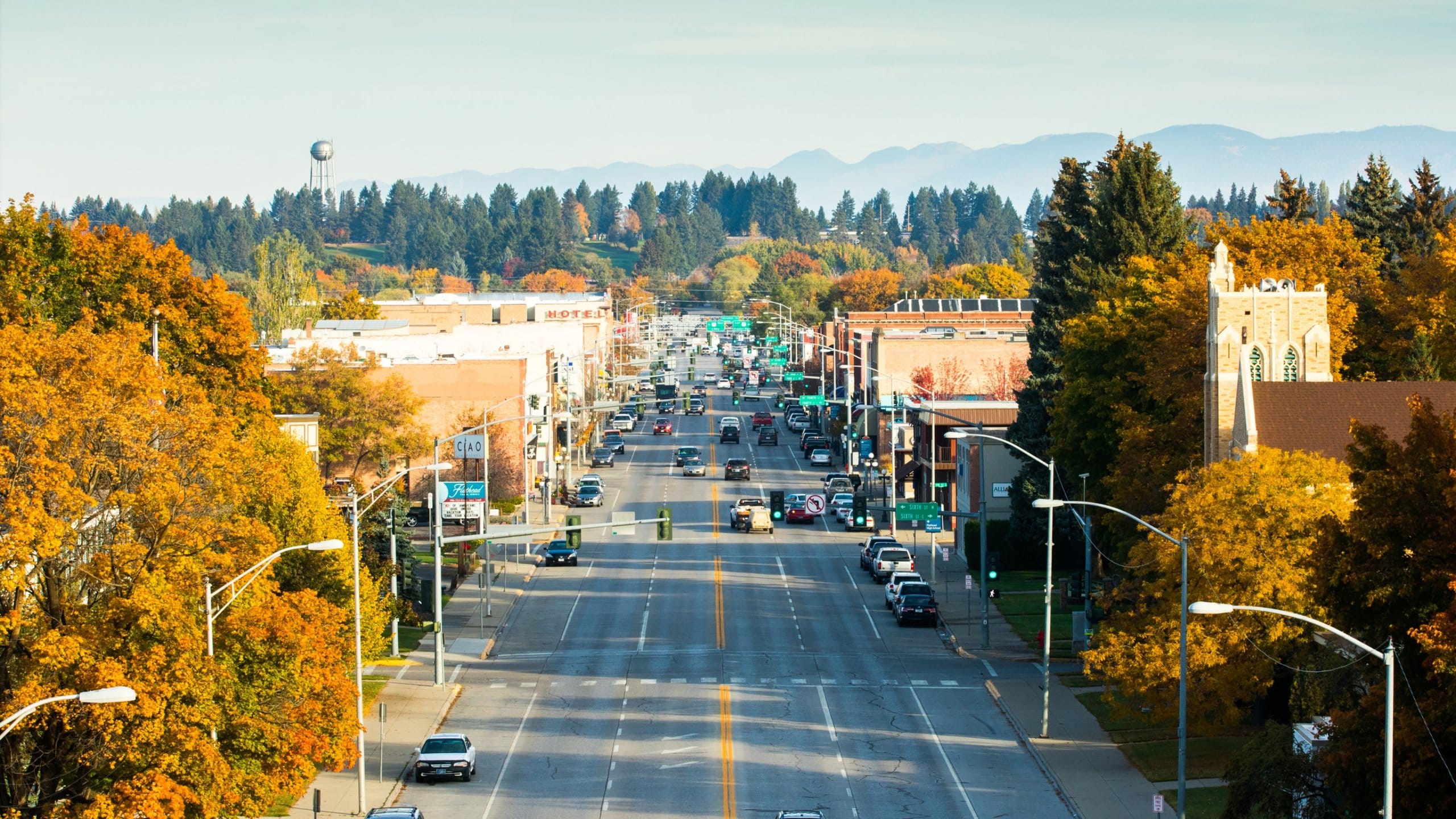Kalispell, nestled in Montana’s picturesque Flathead Valley, is experiencing a period of remarkable transformation fueled by rapid population growth. This once tranquil mountain town has become Montana’s 7th largest city, witnessing a substantial 26% population surge since 2020. This article delves into the multifaceted aspects of this growth, exploring its impacts, challenges, and the evolving narrative of Kalispell.
Understanding Kalispell’s Growth
Kalispell’s population has climbed from 24,558 in 2020 to an estimated 31,540 in 2024, a remarkable 26.54% increase. This growth spurt raises questions about the underlying causes and its implications for this once-quiet community. Researchers are actively exploring these migration patterns, and future studies may offer a deeper understanding of this demographic shift.
What’s Driving the Change?
Several factors likely contribute to Kalispell’s population boom. Montana’s renowned outdoor recreational opportunities, the prospect of a more affordable lifestyle compared to other Western states, and a growing job market could all be playing a role. Ongoing research aims to pinpoint the precise interplay of these factors. You can delve into the compelling story of prisoners reprieve nyt to understand how unexpected circumstances can lead to population shifts in different areas.
Growing Pains and Opportunities
This influx of new residents presents both opportunities and challenges. The increased demand for housing, strained infrastructure, and growing need for public services like schools and hospitals are some of the challenges Kalispell faces. Conversely, this growth fuels the local economy, creating new businesses, job opportunities, and a more dynamic community. Discover the intriguing financial landscape surrounding pete buttigieg net worth 2024 for a different perspective on the financial impacts of growth and change.
Kalispell’s Regional Impact
Kalispell serves as the county seat of Flathead County and the largest city in Northwest Montana. Its growth has a ripple effect, influencing the entire region’s economic and social landscape. As a major commercial center, Kalispell’s expansion impacts surrounding towns and communities that depend on its services and economic activity.
Looking Ahead: Kalispell’s Future
Predicting the future with certainty is impossible, but understanding potential trajectories is crucial for sustainable planning. Questions about preserving Kalispell’s small-town charm while accommodating growth, managing traffic congestion, and ensuring adequate housing remain at the forefront. Ongoing research in urban development and population trends suggests several possible scenarios, each with its own set of implications.
Projected Growth
The table below presents projected population growth based on a consistent annual growth rate. It’s important to note that these are estimates, and actual figures may vary due to unpredictable factors.
| Year | Estimated Population | % Change from Previous Year |
|---|---|---|
| 2020 | 24,558 | – |
| 2021 | 25,923 | 5.56% |
| 2022 | 27,375 | 5.59% |
| 2023 | 28,920 | 5.64% |
| 2024 | 30,564 | 5.68% |
Note: These figures are based on a consistent 5.53% annual growth rate and may not reflect official projections. Future research may provide more refined and accurate predictions.
Kalispell, MT Demographics: Understanding the White Population Percentage & Trends
Understanding Kalispell’s racial demographics requires a nuanced approach that goes beyond simple percentages. While approximately 90% of residents identify as White as of 2024, exploring the complexities within this statistic reveals a more complete picture.
Deconstructing the Data
Different sources cite varying percentages for Kalispell’s White population, ranging from 90.37% to 93.5%. Investigating these discrepancies, such as differences in data collection methods or self-reporting, is essential for accurate analysis. This detailed approach provides a richer understanding than a single figure.
Historical Context and Emerging Trends
Comparing current estimates with the 2020 Census data allows for the identification of emerging trends. Analyzing whether the percentage of White residents has increased or decreased helps understand the dynamic nature of demographic shifts. Factors like migration, birth rates, and economic conditions could contribute to these changes.
Diversity Beyond the Majority
While Kalispell is predominantly White, acknowledging the contributions of other racial and ethnic groups—Black or African American, American Indian and Alaska Native, Asian, Hispanic or Latino, and individuals identifying with two or more races—is crucial. Examining the growth rates of these populations relative to the overall population enhances our understanding of Kalispell’s evolving diversity.
Mapping the Demographics
Examining the geographic distribution of racial groups within Kalispell, including the reported higher concentration of White residents in South Kalispell, reveals potential social and economic influences. This analysis sheds light on residential patterns and access to resources in different areas.
Implications and Future Considerations
Understanding racial demographics goes beyond statistics; it informs policy decisions related to education, housing, economic opportunities, and healthcare. Analyzing potential challenges and opportunities arising from demographic shifts is crucial for creating a more inclusive and equitable Kalispell.
Kalispell, Montana’s Booming Economy: Beyond Tourism, Healthcare Leads the Way
Kalispell’s economy is more than its scenic beauty and tourism appeal. While tourism plays a vital role, the healthcare sector, specifically healthcare and social assistance, dominates the economic landscape. This sector has experienced a staggering 180% growth since 1990, likely influenced by an aging population and Kalispell’s strategic positioning as a regional medical hub. Logan Health Medical Center stands as a significant employer and a cornerstone of the local economy.
Tourism, while not the dominant sector, remains a powerful economic driver, supporting retail and hospitality businesses, creating seasonal jobs, and injecting revenue into the city. The vibrancy of Main Street during tourist season testifies to this impact.
Kalispell’s economy benefits from diversification beyond healthcare and tourism. The growth in professional services, finance, and insurance suggests a broadening economic base, attracting new talent and businesses seeking a thriving community. This diversification strengthens Kalispell’s economic resilience.
Kalispell’s Homeless Population: Understanding the Numbers and the Crisis
The issue of homelessness in Kalispell demands attention and a multifaceted approach. The 2022 Point-in-Time count identified 319 homeless individuals, representing over 20% of Montana’s homeless population and placing Kalispell second only to Missoula. However, a 2024 survey suggested a potential decrease to 263 individuals, highlighting the dynamic nature of homelessness and the challenges in accurate quantification.
Kalispell’s response to homelessness includes restrictions on park usage, driven in part by the presence of homeless individuals in public spaces. These measures, while potentially addressing immediate concerns, raise questions about their long-term effectiveness and potential displacement of vulnerable populations. The closure of a local warming shelter, which led to legal challenges, emphasizes the complex interplay between public safety and providing support for those experiencing homelessness.
Kalispell’s experience reflects a broader trend of increasing homelessness across Montana. Between 2021 and 2022, seven major Montana cities reported a rise in their homeless populations, and 2023 data indicated nearly 1,600 homeless individuals statewide. Understanding these broader trends and the approaches taken by other cities offers valuable insights for Kalispell. Addressing homelessness requires moving beyond statistics and understanding the individual stories and systemic factors contributing to this complex issue.
- Mastering Leader in Spanish: The Complete Guide - April 19, 2025
- Uncovering Surprising Parallels: England Size Compared to US States - April 19, 2025
- Old Mexico Map: Border Shifts 1821-1857 - April 19, 2025
















